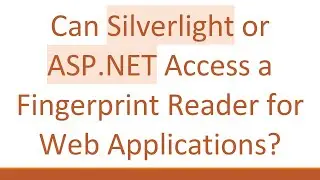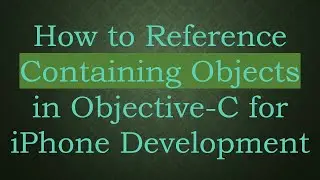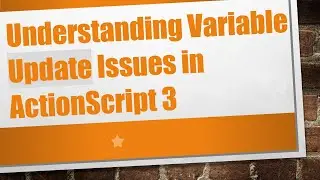Why Can't I Run My Flutter App on Emulator or Real Device Despite Correct SDK Setup?
If you're struggling to run your Flutter app on an emulator or real device despite having the correct SDK setup, you might be encountering configuration issues. Learn common causes and solutions here.
---
Disclaimer/Disclosure - Portions of this content were created using Generative AI tools, which may result in inaccuracies or misleading information in the video. Please keep this in mind before making any decisions or taking any actions based on the content. If you have any concerns, don't hesitate to leave a comment. Thanks.
---
Why Can't I Run My Flutter App on Emulator or Real Device Despite Correct SDK Setup?
Building and deploying a Flutter app is generally straightforward, but sometimes, developers encounter issues running their Flutter app on an emulator or real device, even if the SDK setup appears correct. Let's explore common reasons why this happens and potential solutions.
Common Issues
Incorrect main.dart Configuration
One frequent cause of this issue is an incorrect configuration of the main.dart file in your project. Make sure that main.dart is properly set as the entry point for your application. Ensure there are no typos or syntax errors within the entry point function, usually named main. This step is crucial for the app to compile and run as expected.
SDK Problems
Even though you've set up the SDK correctly, there might be some underlying problems. Verify that you have installed the correct versions of the required SDKs (Java, Android, and Flutter). Sometimes, version mismatches can lead to compatibility issues, preventing the app from running.
Android Studio Configuration
Ensure that Android Studio is correctly configured for Flutter development. Validate the following:
Android SDK Location: Make sure Android Studio points to the correct path where the Android SDK is installed.
Flutter Plugin: Verify that the Flutter plugin is installed and up-to-date.
Dart Plugin: Ensure the Dart plugin is also installed and updated.
Emulator Issues
Sometimes the issue lies with the Android emulator itself. Double-check the following:
AVD Configuration: Create a Virtual Device (AVD) with the appropriate system image and settings.
Hardware Acceleration: Ensure hardware acceleration is enabled for better performance.
Permissions: Make sure the necessary permissions are granted to the emulator to run the app.
Real Device Issues
Running on a real device can be hindered by several issues:
Developer Mode: Ensure that Developer Mode is enabled on your device.
USB Debugging: Check that USB Debugging is turned on.
Device Drivers: Install the appropriate USB drivers for your device to communicate effectively with your development machine.
Diagnosing the Problem
To diagnose the exact issue, you can use the following commands in the terminal:
flutter doctor: This command checks your Flutter setup and highlights any issues.
flutter run: Running this command provides detailed logs that can help pinpoint what's going wrong.
Conclusion
While it can be frustrating to deal with deployment issues, understanding the possible reasons why your Flutter app won't run on an emulator or real device is the first step. By ensuring your main.dart is configured correctly, verifying your SDK installations, and checking both Android Studio and your device settings, you can usually resolve these issues.
Take a systematic approach to troubleshoot each potential problem area, and you'll be deploying your Flutter app smoothly in no time.































